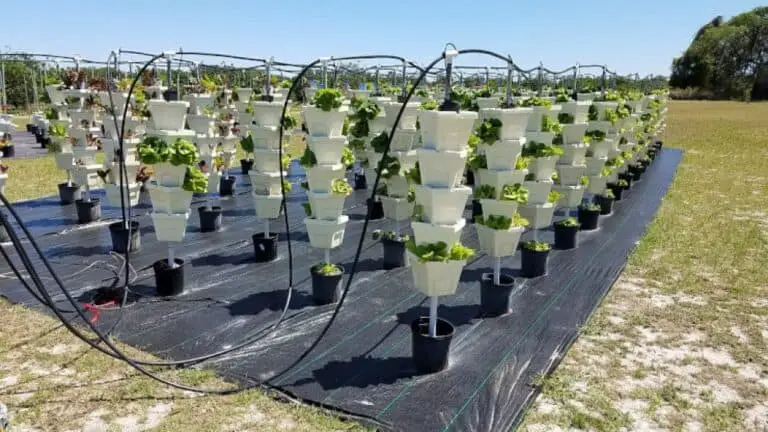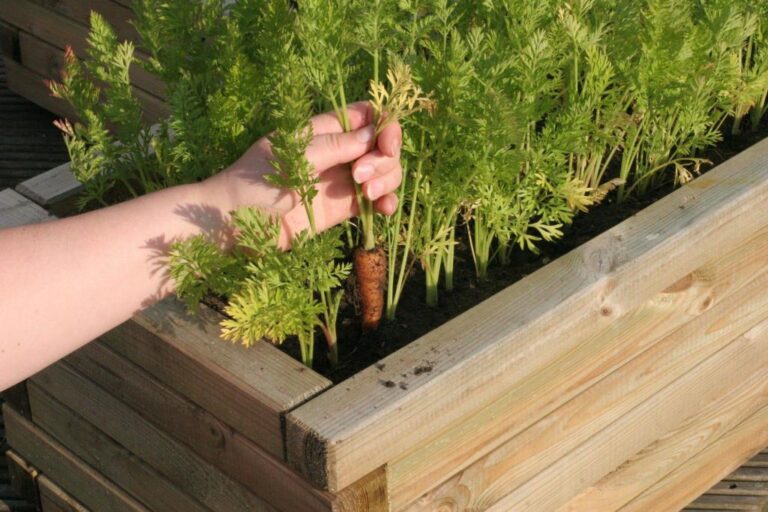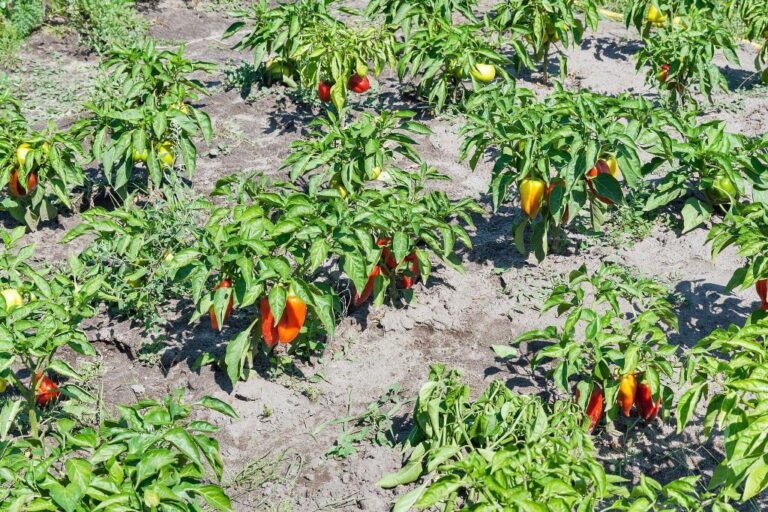How Much Soil Do You Need for Grass to Grow? (Depth and Spacing)

Creating a lush, green lawn is a rewarding endeavor that begins with understanding the soil requirements for grass growth. Have you ever wondered how much soil is necessary to cultivate a thriving, green lawn? To grow grass, you must know the right amount of soil. This is true whether you’re starting a new lawn or maintaining an existing one.
In this article, we’ll explore the factors that determine the quantity of soil needed to establish and sustain healthy grass. You’ll learn to optimize soil depth. This will promote strong roots. It will keep your lawn lush and vibrant all year.
Understanding the Basics of Grass Growth
The Role of Soil in Grass Health
The soil is the foundation of any healthy lawn. It provides essential nutrients, supports root development, and influences water retention and drainage. The right soil depth and quality are critical to the success of your grass.
Types of Grass and Their Soil Needs
Different types of grass have varying soil requirements. Generally, grasses fall into two categories:
- Cool-Season Grasses: Cool-season grasses include Kentucky bluegrass, fescue, and ryegrass. They thrive in cooler climates.
- Warm-Season Grasses: These include Bermuda grass, Zoysia, and St. Augustine, which grow best in warmer regions.
Each type has specific needs regarding soil depth, spacing, and overall soil health.
Soil Depth Requirements for Grass

New Lawns
For new lawns, the recommended soil depth is crucial for proper root establishment. Ideally, you should aim for:
- Cool-Season Grasses: 4-6 inches of soil
- Warm-Season Grasses: 6-8 inches of soil
This depth ensures that the grass roots have enough room to grow and access the necessary nutrients and moisture.
Existing Lawns
If you’re overseeding or rejuvenating an existing lawn, a slightly shallower depth may be sufficient:
- Cool-Season Grasses: 2-3 inches of soil
- Warm-Season Grasses: 3-4 inches of soil
This additional layer helps improve soil structure and provides fresh nutrients for the grass.
Calculating Soil Volume
Formula for Soil Volume
To calculate the amount of soil needed for your lawn, use the following formula:
Soil Volume=Area×Depth\text{Soil Volume} = \text{Area} \times \text{Depth}Soil Volume=Area×Depth
Where:
- Area is the total square footage of the lawn.
- Depth is the desired soil depth in feet.
Example Calculation
For a lawn area of 1,000 square feet with a required soil depth of 6 inches (0.5 feet):
Soil Volume=1,000 sq ft×0.5 ft=500 cubic feet\text{Soil Volume} = 1,000 \, \text{sq ft} \times 0.5 \, \text{ft} = 500 \, \text{cubic feet}Soil Volume=1,000sq ft×0.5ft=500cubic feet
Convert cubic feet to cubic yards (since soil is often sold by the cubic yard):
Cubic Yards=50027≈18.5 cubic yards\text{Cubic Yards} = \frac{500}{27} \approx 18.5 \, \text{cubic yards}Cubic Yards=27500≈18.5cubic yards
Table: Soil Requirements for Various Lawn Sizes
| Lawn Size (sq ft) | Soil Depth (in) | Soil Volume (cubic yards) |
| 500 | 4 | 6.2 |
| 500 | 6 | 9.3 |
| 1,000 | 4 | 12.4 |
| 1,000 | 6 | 18.5 |
| 2,000 | 4 | 24.7 |
| 2,000 | 6 | 37.0 |
Soil Quality and Preparation
Soil Testing
Before adding new soil, it’s essential to test your existing soil. A soil test will reveal the pH level and nutrient content, helping you make necessary adjustments.
Amending Soil
Based on the soil test results, you may need to amend your soil. Common amendments include:
- Lime: To raise the pH of acidic soil.
- Sulfur: To lower the pH of alkaline soil.
- Compost: To improve soil structure and add organic matter.
- Sand: To enhance drainage in heavy, clay soils.
Preparing the Soil
- Clear Debris: Remove rocks, roots, and weeds from the area.
- Loosen Soil: Use a tiller or garden fork to break up compacted soil.
- Level the Area: Smooth the soil surface to create an even planting bed.
Read: Do Chickens Eat Grass Seed?
Planting Grass
Choosing the Right Grass Seed
Select a grass seed variety suitable for your climate and soil conditions. Consider factors like sun exposure, water requirements, and maintenance levels.
Sowing Grass Seed
- Broadcasting: Evenly distribute the grass seed using a broadcast spreader.
- Seeding Rate: Follow the recommended seeding rate on the grass seed package for optimal coverage.
Covering Seed
- Lightly rake the soil to cover the seeds with a thin layer of soil.
- Use a lawn roller to press the seeds into the soil, ensuring good seed-to-soil contact.
Initial Watering
- Frequency: Water the newly seeded lawn daily to keep the soil consistently moist.
- Depth: Aim for shallow watering to avoid washing away the seeds.
Spacing Considerations
Proper Spacing for Grass Growth
Proper spacing is essential for grass to grow thick and healthy. Overcrowding can lead to competition for nutrients and water, while too much space can allow weeds to establish.
Guidelines for Spacing
- Seeded Lawns: Distribute seeds evenly to avoid clumping and ensure uniform growth.
- Sod Lawns: Lay sod pieces tightly together, leaving no gaps.
Overseeding
For existing lawns, overseeding helps fill in bare spots and improve grass density. Ensure even distribution and adequate spacing between new seeds and existing grass.
Maintaining Your Lawn
Watering
- New Lawns: Water daily until grass is established.
- Established Lawns: Water deeply but infrequently to encourage deep root growth.
Fertilizing
- Use a balanced, slow-release fertilizer. Follow the grass type and soil test recommendations.
- Avoid over-fertilizing, which can lead to nutrient runoff and environmental damage.
Mowing
- Height: Keep the mower blade at the highest setting for the first few mowings.
- Frequency: Mow regularly to maintain the recommended height for your grass type.
Weed Control
- Manual Removal: Pull weeds by hand or use a weeding tool.
- Herbicides: Apply selective herbicides for persistent weed problems, following label instructions.
Summary Table: Key Steps for Growing Grass
| Step | Action |
| Soil Testing | Test pH and nutrient levels |
| Soil Amendment | Adjust pH, add organic matter |
| Clearing Debris | Remove rocks, roots, and weeds |
| Loosening Soil | Till or fork soil to break up compaction |
| Leveling Soil | Smooth surface for even planting bed |
| Choosing Grass | Select suitable grass seed for your climate |
| Sowing Seed | Broadcast seeds evenly |
| Covering Seed | Lightly rake and press seeds into soil |
| Initial Watering | Water daily to keep soil moist |
| Spacing | Ensure even seed distribution or tight sod lay |
| Watering | Deep, infrequent watering for established lawns |
| Fertilizing | Apply balanced fertilizer as needed |
| Mowing | Maintain recommended grass height |
| Weed Control | Remove weeds manually or with herbicides |
Conclusion
Growing a beautiful, healthy lawn starts with understanding how much soil you need and how to prepare it properly. By following the guidelines for soil depth, spacing, and prep, you can create an ideal environment for your grass to thrive.
These steps will help you grow a lush, green yard. It will improve your outdoor space, whether you’re planting a new lawn or fixing an old one. With the right care and maintenance, your lawn will be a source of pride and enjoyment for years to come.






